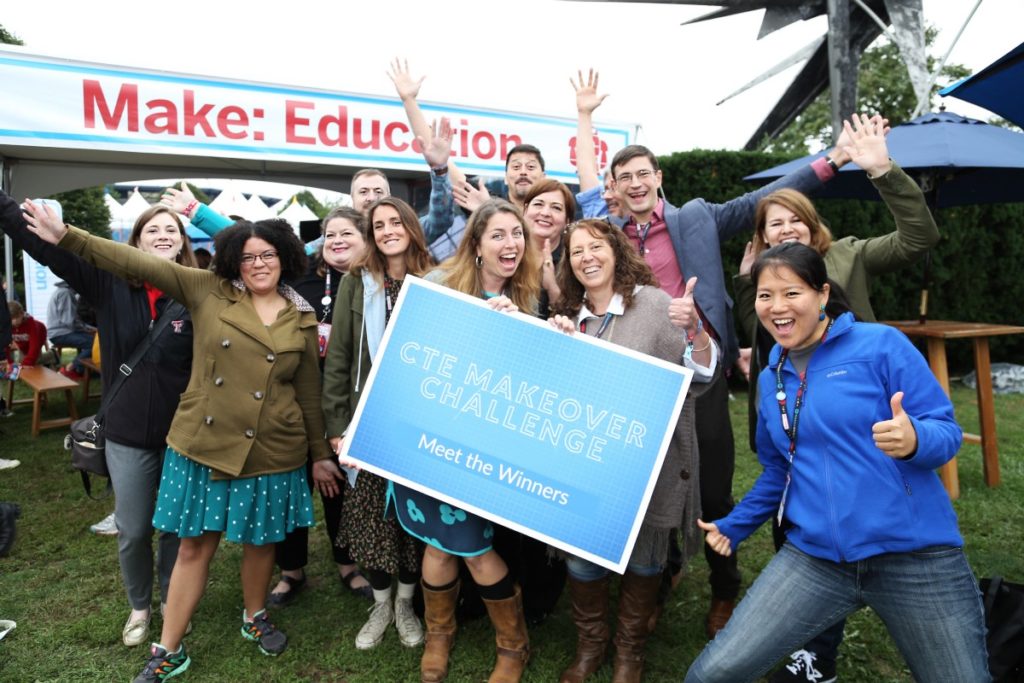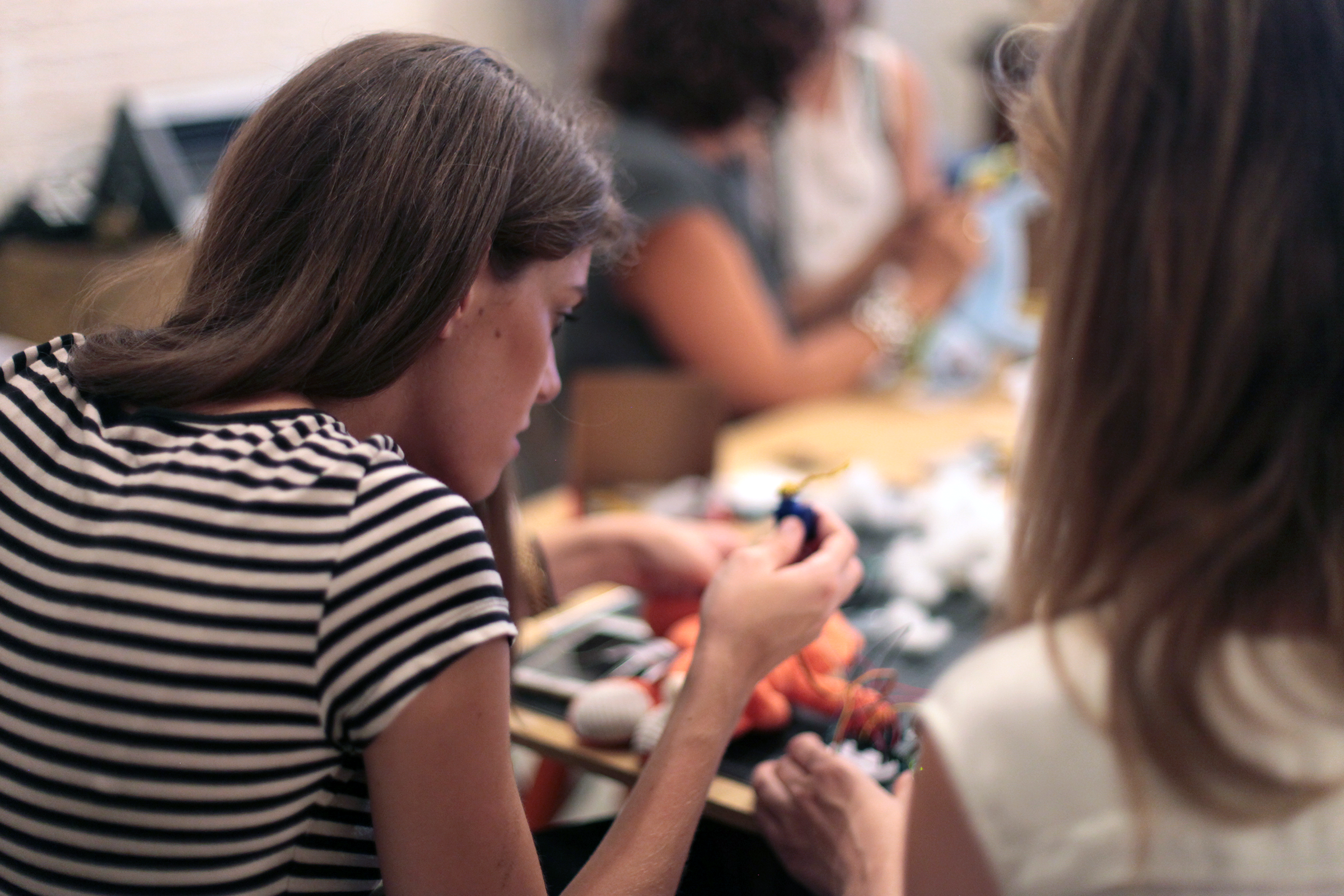Dubbed the Greatest Show & Tell on Earth, last weekend’s World Maker Faire drew tens of thousands to Queens, New York, to play with everything from DIY robots to puppets made from trash. Behind all the play, though, is something much bigger — a movement with the power to build the critical-thinking skills that companies and President Obama call key to the future economy.
Yet the maker movement has yet to make big waves in corporate America. And this is a missed opportunity. While technology firms, government, and education embrace making as the future, other industries can reap rewards by inspiring employees to both think of solutions and make them happen.
Design doing over design thinking
First, the basics. Making harkens back to America’s roots of creation and ingenuity — with a modern twist through tech.
Maker culture is often thought of as Etsy on steroids: not just a hand-knit scarf, but one prototyped with software, wired with temperature-detecting sensors and lights, and produced with a 3D printer. Though many makerspaces might include this hardware, making is much more than a heap of tech equipment in an empty room. The real value is what we call a maker mindset of solving problems in new ways, and making those solutions real.
Whether an employee uses a mound of clay to mold an idea in 3D or a computer program to depict a solution, the payoff of a maker mindset means not just brainstorming ideas, but bringing them to life through hands-on experimenting and building.
This might entail asking employees to not just submit a spreadsheet of marketing metrics, but to model what customer experiences actually look like. It might be encouraging staff to use SketchUp software to illustrate a new process, or physically taking apart a recently launched product to stimulate fresh thinking about how it could improve.
With these activities come the holy-grail skills that employers often say they’re missing in their people: Things like the grit to start over after a prototype fails; critical thinking to understand customer needs and problems; and communication skills to explain technical subjects with empathy.
Employees today might brainstorm via design thinking, but many stop at the sticky-notes. A maker mindset is more about design doing, with a focus on the follow-through: building out the sticky-note ideas through prototyping, then implementing the ones that work.
Makers go beyond strategy to creation, and beyond designing decks to deploying something tangible. In a world where companies’ internal crowdsourcing processes can lead to as little as 4% of ideas being implemented, actual making matters.
Who’s playing in the corporate makerspace?
Educators and policymakers have heavily invested in maker culture, seeing it as an engaging way to build a future-ready workforce. As for the private sector, recognition of the movement is mixed.
For leading tech and industrial companies like Google and GE, making is core to corporate values. Google lets its software engineers hack their desks; NASA invites the public to make anything from small satellites to robots; GE has a software-driven smart factory to produce jet engines and fuel nozzles.
Outside those industries, however, myths of making still hold it back from everyday business; it’s often pigeonholed as irrelevant, fringe, or fluffy.
Sure, hackers gonna hack — few are surprised that Netflix has a maker initiative, and many recall Facebook’s famous former motto to “move fast and break things.” As more organizations describe themselves as tech companies, it’s time for making to be seen outside the domain of hackers and become part of every company’s culture.
Three ways your company can build a maker mindset
1. Get exposure to maker culture: Start small, but start somewhere. Take a field trip to a local makerspace. Invite your employees to annual events like Maker Faire (where we spent this past weekend), or a future MakerCon. Last year our entire team embarked on a half-day offsite to learn principles of making with a low-cost, electronic prototyping platform called Arduino to turn stuffed animals into animated, robotic ones. Cutting, sewing, wiring, and programming was not only fun, but also gave us a chance to showcase skills not normally celebrated in the workplace.
2. Bring making inside: Dedicated makerspaces in your offices allow workers to easily experiment and build tangible business solutions. For instance, in healthcare, nurses have long been under-the-radar innovators, regularly customizing devices for patients. But their creative ideas rarely left the walls of their hospital rooms. Seeing this gap, MakerNurse develops makerspaces inside hospitals, encouraging nurses to take advantage of 3D printers, laser cutters, and other tools to turn their hacks into real products. But you don’t need a 3D printer to emulate this. Offering a room full of sketchpads, whiteboards, and low-cost prototyping technology provides space for people to share and operationalize ideas. Consider a competition that invites employees — or people outside your organization — to build creative solutions to real problems, like InfoSys’ InfyMakers contest, whose contestants created a device that allows the blind to draw with their eyes.
3. Invest in a future of makers. Alleviating the skill gap among the next generation of workers means investing in making for both workers and students. For instance, Cisco has its Networking Academy, an IT skills and career building program that’s worked with more than 5.5 million learners to date. And companies including Etsy, Dremel, and Microsoft served as sponsors of the Luminary Labs-powered CTE Makeover Challenge for the U.S. Department of Education, where high schools were invited to design and build makerspaces for students.

CTE Makeover Challenge Winners shared how they planned, designed, and created makerspaces at their high schools.




